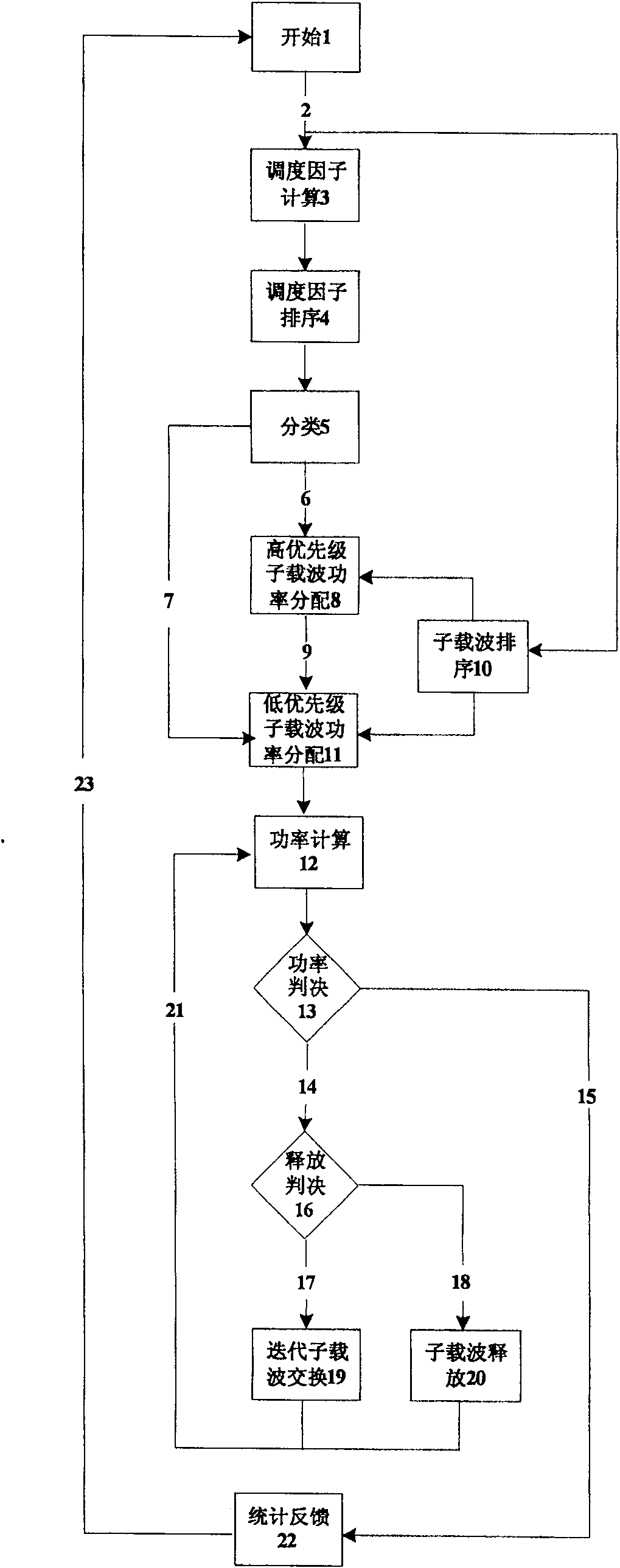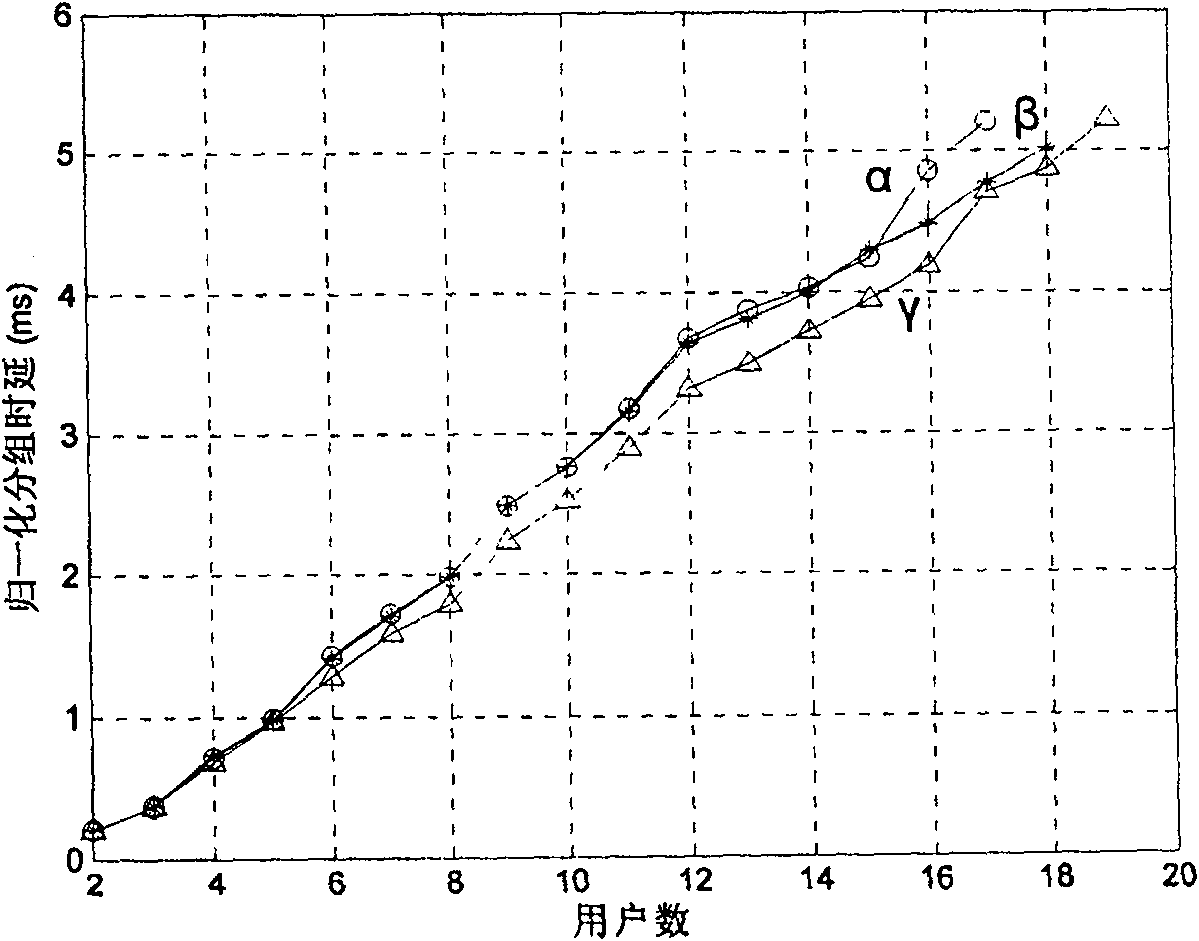Real-time service resource distribution method of orthogonal frequency division multisystem
An orthogonal frequency division and resource allocation technology, applied in the field of resource allocation in OFDM communication systems, can solve problems such as increasing the real-time service packet loss rate, not considering the constraints of latency, and reducing system capacity.
- Summary
- Abstract
- Description
- Claims
- Application Information
AI Technical Summary
Problems solved by technology
Method used
Image
Examples
Embodiment 1
[0033] In this embodiment, an OFDM transmission system with a bandwidth of 20 MHz and a number of data subcarriers of 512 is used. The channel adopts the COST207 six-path model, the maximum multipath delay is 10us, the six paths are distributed at equal intervals within 0-10us, and the power spectral density of each path meets the usual Jake model. The maximum Doppler deviation is 50Hz. Each frame consists of one OFDM symbol.
[0034] The business source model adopts ON-OFF two-state Markov process. The activation period and the silent period are independent of each other and obey the exponential distribution (Efficiency of packet reservation multiple access, IEEE Trans. on Veh. Technol., 1991, vol.40: 170-176. and Performance of PRMA: A packet voice protocol for cellular systems , IEEE Trans. on Veh. Technol., 1991, vol.40:584-598.). The transition probability from the active period to the silent period is γ=1-exp(-T f / t 1 ), the transition probability from silent perio...
PUM
 Login to View More
Login to View More Abstract
Description
Claims
Application Information
 Login to View More
Login to View More - R&D
- Intellectual Property
- Life Sciences
- Materials
- Tech Scout
- Unparalleled Data Quality
- Higher Quality Content
- 60% Fewer Hallucinations
Browse by: Latest US Patents, China's latest patents, Technical Efficacy Thesaurus, Application Domain, Technology Topic, Popular Technical Reports.
© 2025 PatSnap. All rights reserved.Legal|Privacy policy|Modern Slavery Act Transparency Statement|Sitemap|About US| Contact US: help@patsnap.com



